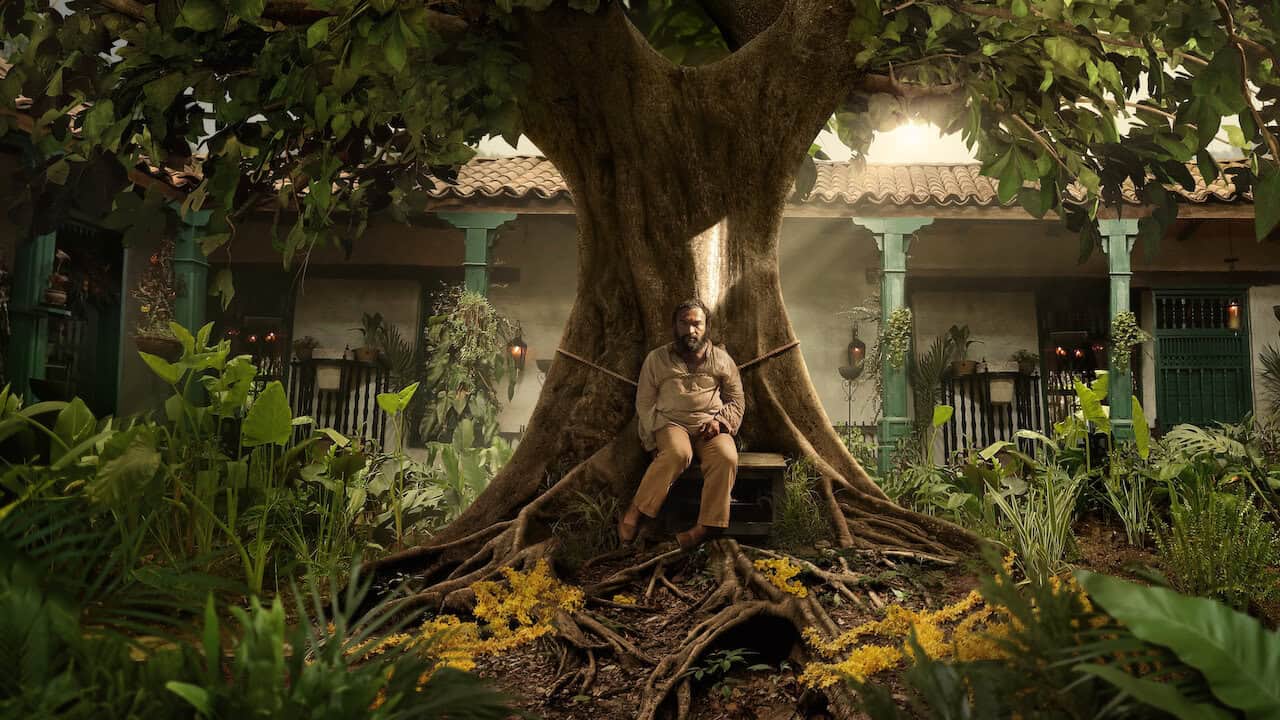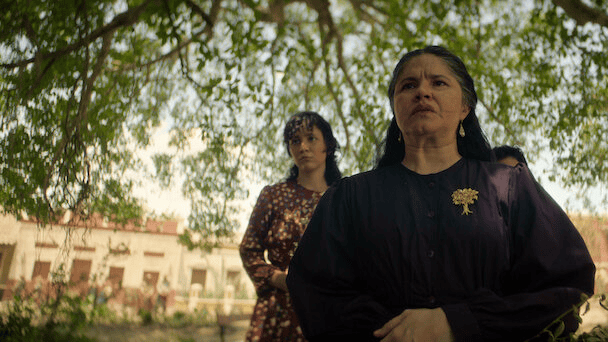
Netflix’s adaptation of Gabriel García Márquez’s “One Hundred Years of Solitude” (Cien Años de Soledad) premiered on December 11, 2024. The series consists of 16 episodes, with the first 8 released initially. This Spanish-language production, filmed in Colombia, aims to capture the essence of the novel’s magical realism. Despite García Márquez’s initial resistance to adaptations, his sons granted permission for the project, providing a new way for fans and a new generation to experience the story.
Exploring Netflix’s Adaptation of One Hundred Years of Solitude
The Journey to the Screen
Gabriel García Márquez’s “Cien Años de Soledad” (One Hundred Years of Solitude) is a cornerstone of Latin American literature. The novel, which tells the multi-generational story of the Buendía family in the fictional town of Macondo, has long been considered unfilmable by many. For decades, García Márquez resisted adapting his masterpiece for the screen. However, his sons, Rodrigo and Gonzalo García Barcha, eventually granted Netflix the rights. This decision opened the door for a large-scale, Spanish-language production.
A Faithful Adaptation
One of the most important aspects of this adaptation is its commitment to the Spanish language. This choice ensures the series retains the authenticity and cultural nuances of the original novel. Filmed primarily in Colombia, the series aims to visually capture the magical realism that characterizes García Márquez’s writing. The production design and cinematography are key to bringing Macondo to life.

The Production and Release
The Netflix series premiered on December 11, 2024. The first season consists of 16 episodes, with the first 8 episodes released initially. This two-part release strategy is a common practice for Netflix, designed to build anticipation and maintain viewer interest. The scale of the production is significant, involving a large cast and crew. The series has been in development for several years, reflecting the complexity of adapting such a beloved and intricate work.
Comparing Book to Screen
Adapting a literary masterpiece always presents challenges. Here’s a look at some potential pros and cons:
| Aspect | Potential Pros | Potential Cons |
|---|---|---|
| Visual Representation | Brings Macondo and its magical elements to life visually. | May not fully capture the reader’s individual imagination. |
| Accessibility | Reaches a wider audience unfamiliar with the book. | May simplify complex themes and narratives. |
| Language | Maintaining the Spanish language preserves authenticity. | Subtitles may be necessary for some viewers. |
| Length | A multi-episode format allows for a more detailed portrayal of the story. | Pacing and maintaining viewer engagement over many episodes can be difficult. |
Reception and Impact
The series has generated significant buzz within literary and film circles. Early reviews and audience responses will be crucial in determining its overall success. The adaptation has the potential to introduce a new generation to García Márquez’s work and reignite interest in Latin American literature. The series success could also pave the way for more adaptations of complex literary works.

The Legacy of García Márquez and Magical Realism
Gabriel García Márquez is one of the most important figures in 20th-century literature. He won the Nobel Prize in Literature in 1982. He is considered a master of magical realism, a literary style that blends realistic elements with fantastical or supernatural ones. “One Hundred Years of Solitude” is his most famous work, and it has had a profound influence on writers around the world. The novel explores themes of family, love, loss, time, and the cyclical nature of history. It is a complex and rich story that continues to resonate with readers. The adaptation of “One Hundred Years of Solitude” is not just about bringing a book to the screen; it’s about honoring the legacy of a literary giant.
The adaptation of “One Hundred Years of Solitude” on Netflix is a landmark event for both literature and television. The series has the potential to become a cultural phenomenon, bringing the magic of Macondo to a global audience. Whether you’re a longtime fan of the novel or new to García Márquez’s work, this adaptation offers a unique opportunity to experience this timeless story in a new way.
The enduring appeal of magical realism as a literary and cinematic style is tied to its ability to explore complex themes through engaging narratives. Beyond “One Hundred Years of Solitude,” other notable examples include Laura Esquivel’s “Like Water for Chocolate” and films like “Pan’s Labyrinth” by Guillermo del Toro. These works use fantastical elements to address real-world issues, such as social injustice, political turmoil, and personal struggles. This blend of the real and the unreal allows for a deeper exploration of human experience, making magical realism a powerful and relevant form of storytelling.
Short Summary:
- The series faithfully captures the essence and visual grandeur of García Márquez’s magical realism.
- Expectations were initially tempered by skepticism, given the novel’s cultural significance.
- Despite some pacing issues, the adaptation showcases standout performances and a lush portrayal of Macondo.
García Márquez’s novel has long stood as a hallmark of literature, intertwining fantastical elements with profound social commentary. The opening line, which resonates deeply with readers across generations, gracefully transitions into the visual narrative voiced by an omniscient narrator. The series, premiering on December 11, reintroduces a beloved story to both dedicated fans and newcomers alike.
Attempting to adapt a literary masterpiece like Cien Años de Soledad is fraught with challenges, particularly when considering its expansive themes and complex characters. The story spans multiple generations of the Buendía family, chronicling their trials within the magical town of Macondo. Netflix’s creators faced the daunting task of respecting the original narrative while also bringing it vividly to life on screen. However, beneath any skepticism, there’s a palpable excitement as the adaptation unfolds.
“Muchos años después, frente al pelotón de fusilamiento, el coronel Aureliano Buendía había de recordar aquella tarde remota en que su padre lo llevó a conocer el hielo,” narrates the opening, connecting audiences to the gravity of the tale. This line, arguably the most famous in Spanish literature, sets the tone for the entire show. The choice to deliver the story in Spanish — the language in which it was conceived — showcases a commitment to authenticity. Subtitles guide non-Spanish speakers, ensuring the adaptation retains its emotional resonance.
The effort to film in Colombia not only honors García Márquez’s roots but enriches the narrative backdrop. The creators, looking to honor the vibe of both the book and the culture it springs from, found that filming on original soil added layers of depth. Transporting viewers to the lush locales of Macondo, Netflix spared no expense in creating a visually stunning universe. Spectacle-filled sets and meticulous costume design breathe life into this mythical town, making it inviting yet hauntingly familiar.
As viewers delve deeper into episodes, they rediscover familiar faces, such as José Arcadio Buendía and Úrsula Iguarán, brought to life through remarkable performances. For instance, Marleyda Soto’s portrayal of the elder Úrsula embodies resilience, skillfully navigating the complexities of her character’s emotions. The juxtaposition of the family’s wealth of ambition against the grim realities of their fated lives is evident in Marco Antonio González’s performance as a youthful José Arcadio Buendía. His journey is emblematic of the broader struggles portrayed in the series.
“Gabo is always with us in this series,” one fan reflected, appreciating how the narrative remains intertwined with García Márquez’s essence.
Adapting such a venerable narrative invites scrutiny, particularly regarding how the themes of the original text translate visually. Moments within the series challenge societal norms portrayed in the book, presenting problematic relationships, especially regarding gender dynamics. Critics were quick to highlight that while the story maintains its place within a historical context, certain elements feel distressingly modern when revisited.
In exploring the relationship dynamics within the Buendía family, the series addresses uncomfortable truths while retaining the story’s magical essence. Characters like Colonel Aureliano Buendía (Claudio Cataño) experience a spectrum of emotions throughout their arcs. Viewers witness Aureliano evolve into a contemplative figure, with a burdened past striking a stark contrast against his earlier ambition, capturing the multifaceted nature of loneliness that García Márquez depicted.
While pacing may lag in certain episodes, which could dissuade some viewers, the sheer visual richness and potent performances often compensate for this defect. “It’s beautiful to explore,” many reviews noted, lauding the intricate storytelling merged with stylistic elements of magical realism that characterize the original text.
In aligning the nuances of family tragedy with colorful storytelling, the show traverses heavy themes like isolation, doused in symbolic visuals reminiscent of García Márquez’s original magic. Juxtaposed against the vibrant depiction of Macondo is the buoyant atmosphere of the Buendía family, providing viewers moments of humor amid sorrow.
Regardless of critical observations, one can’t overlook what the adaptation accomplishes. It opens conversations about representation within Colombia and Latin America, intertwining personal narratives shaped through historical events. “The idea of separate cultural legacies being honored is vital in our representations,” remarked literature professor Gustavo Arango, driving home the relevance of a contemporary retelling adapted with thoughtfulness.
As one critic remarked, “Filming in Macondo, the land of dreams, has allowed the series to remain firmly rooted in its origins.”
The broader implications of this adaptation highlight how modern storytelling can bridge cultural divides and foster connections with younger audiences. By celebrating a literary treasure like Cien Años de Soledad through a two-season format, the series offers a rich storytelling experience for both seasoned readers and new viewers eager to explore its depths.
While no adaptation can fully capture the entirety of García Márquez’s literary brilliance, the Netflix series serves as an engaging homage filled with poignant reflections. The meticulous craftsmanship behind its creation exemplifies how traditional narratives can be reimagined, contributing to discussions that explore identity, culture, and memory. This adaptation provides fans with the opportunity to rekindle their love for the original novel or perhaps inspire a new generation of readers.
In the future, fans and critics will have ample material to examine and discuss, reflecting on their views of the series. Whether it is celebrated as a triumph or criticized for its shortcomings, its significance in keeping García Márquez’s legacy alive is undeniable. This series ultimately fosters a shared appreciation for storytelling—a treasure that transcends time.
As eager viewers prepare to experience this new adaptation, it is clear that this representation of Macondo, despite its challenges, presents another opportunity to explore the profound narratives that define Latin American identity. Like any gathered tale, it is through collective experience and discussion that the layers of meaning can emerge, promoting a continuing journey through the magic of storytelling. For those who cherish García Márquez’s work and wish to explore further, the series invites renewed engagement with the text, guiding both new and seasoned fans through the intricate universe of the Buendía family and their fabled hometown.






